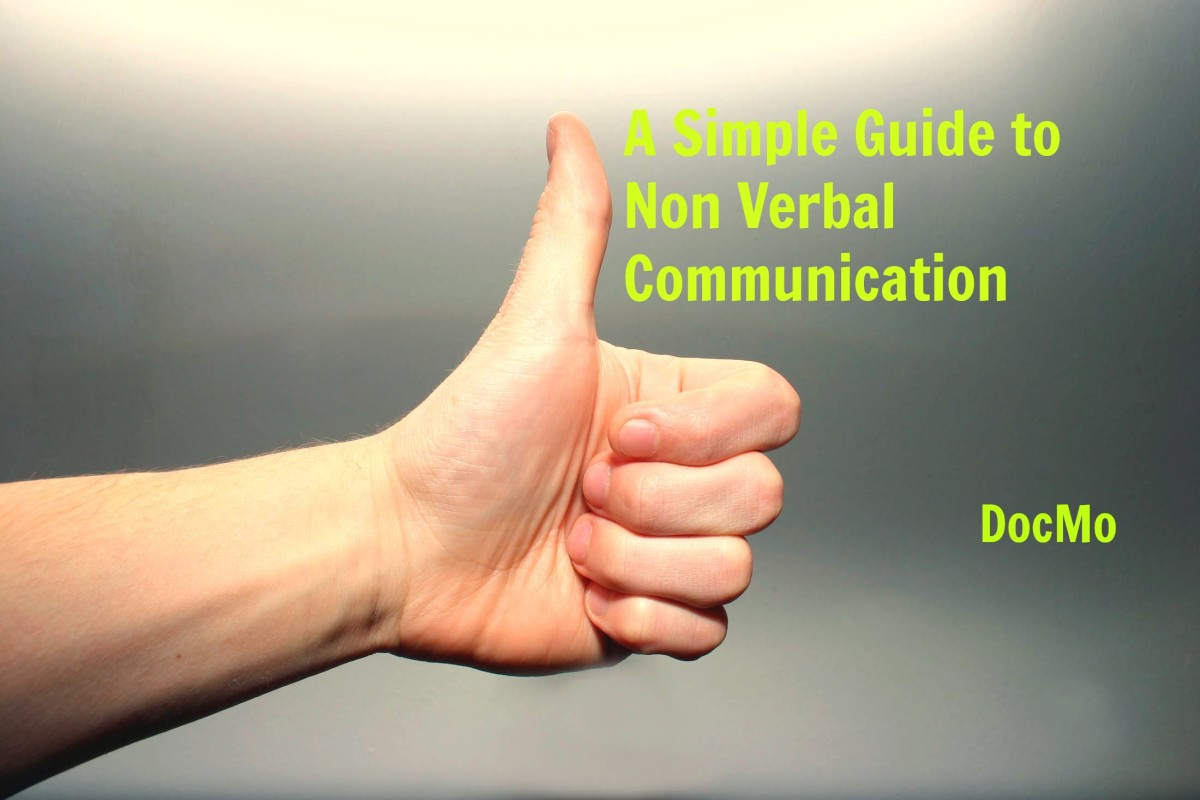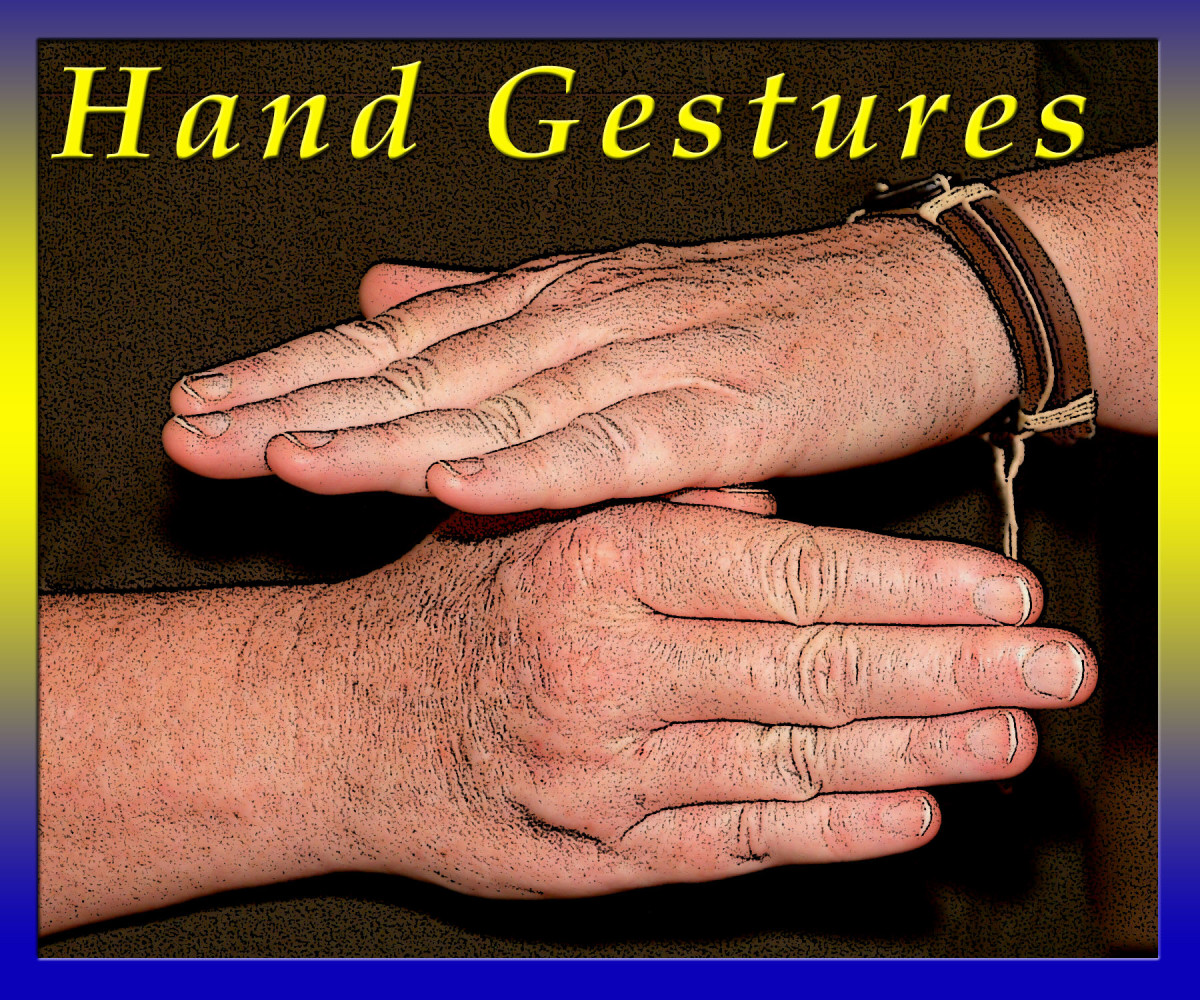Reasons and Significance of Study of Gestures
Common hand gestures across cultures

Gestures and Body Language
I will begin this discussion by examining the reasons of studying gestures and its significance. I will also examine how this may be relevant in second language acquisition. The gestural practices such as emblems, that conventionalise meaning associated with them, may be acceptable for one culture, but ‘impolite’ for the others. In this essay, I will provide some examples of well-known gestural practices which varies across culture. I will also explain what is meant by cross-cultural variation of gestures, and by which factors is governed.
Reasons and Significance of Study of Gestures
In Alibali, M. et al. book (2010), they suggested that gesture is involved in the conceptual planning of speech. Their information and hypothesis were tested in 5-year-old children, using two tasks that required relative lexical access…as well as the theoretical study of Gullberg, M. (2012) involving bilingualism and gestures, basing upon the gestures study use in child and adult speakers with knowledge of more than one language, the result suggested that body movements including gestures are part of the linguistic and communicative behaviour. In support of that argument, Kendon, A. (1986) found that both gestures and speech are interrelated, that they appear to be governed by a single process. From his point of view, gestures may have a syntactic or lexical meaning when it is performed.
Looking at in a wider context, body movements including gestures and language and mind are also strongly intertwined, basing upon in philosophical, neuro-scientific, cognitive, linguistic, and clinical perspectives (Koch et al, 2012, p. 155; McNeill, 2005). According to rules of syntax, “speech uses an established vocabulary of lexical forms organised in structure that unfold as a temporal succession whereas gesture especially when it is used in conjunction with speech is often regarded as expressive because it is depictive.”[1] In cognitive science conference, on the other hand, Seana Coulson (2008) discussed that gesture provides a crucial input to the meaning input process[2]…So, if gestures performed semantically, are these effective to classify behaviour in others and even to have access to human intelligence?
On the other hand, gestures play a crucial role in the process of interaction and communication, and in such a way gestures and speech appear as if are partner, and one way or another cannot be disregarded, according to Kendon, A. (2004:2). He also explained how gestures seem to be ‘universal’ and ‘natural’ forms of expression, saying that gestures become a language itself when speech is unavailable whether for environmental, ritual or physiological reason, and that ‘gestures’ are transformed by social processes into socially shared communicative codes. For example, about how we say ‘good’ non-verbally, for most countries including my Philippines, we use ‘Thumbs-up’, but for other cultures it is a profound insult (e.g. Greece, you unintentionally say to them ‘up yours’) and so on.[3]
So, assuming that visible bodily actions that is posture and gestures are part of linguistic and communicative behaviour, but when to draw a line as to what is ‘gestures’ and what is not?
This is mainly because, ‘people must breathe, they must maintain comfortable postures, and they must maintain an orientation and spacing that will differential attention to another possible.’ (Kendon, 1986). On the other hand, Goffman (1974) and Kendon (1978) provide an empirical study, as to what are actions in a film, people were asked to report the kind of movement they observed in a film of a man making a speech. The result suggested that observers readily and consistently know as to what is considered as gestures that are communicational and what behaviour that is not relevant of communicating. So, broadly speaking, this suggests not all visible bodily actions in an interaction are relevant to talking that may be in progress.
Another relevant reason of gestural study is that ‘gestural expression’ was a possible origin of language before spoken expressions in the evolution of language. Therefore, this old question was became widely prominence and entertained those who are interested in language (Hockett, 1978).
Gestures across cultures
Other Informative Video
Cross-cultural Variation of Gesture
In psycholinguistics perspective, gestures or so-called ‘nonverbal communication’ is believed it convey different meaning and use to have insight of mental representation of a speaker. For example, hand gestures (e.g. V-sign is used in some cultures to signify ‘peace’ or ‘victory’), facial expressions (e.g. smile as to indicate happiness), posture (e.g. crossed-arm as signifies a defensive attitude).[4]
Eye gazing is also a part of nonverbal communication, and in some cultures, eye contact symbolises disrespect (e.g. Latin American Cultures, Chinese Cultures) whereas for others eye contact represents sincerity even intelligence (e.g. Western Cultures) and so on. Even appearance, the colour of your dress (indicates your mood), styles and the brand you use indicates your status etcetera.[5]
In paralinguistic, non-verbal communication is the type of vocal communication without the use of language in which it includes the voice inflection, pitch, rhythm, loudness and tone. For example, a slow rhythm and hash tone might signify gentleness or concern whilst heavy pitch and rising inflection might be attributed to anger or enthusiasm and so on.[6]
‘Haptics’ or touching is used to signify love, affection and familiarity, and in some culture, they do not have ‘touching businesses’. For example, touching is acceptable in Middle East countries, Italy, Greece, Spain and Portugal, Russia, but it is unacceptable in some cultures like Japan, Scandinavia, England. However, it is in neutral in France, China, Ireland and India…[7]
Different classifications of gestures
Beat gestures – these are short and rhythmic movement without carrying content of their own.[8] (They were excluded from the analysis because they had no ‘direct’ relevance on my essay question, but it is also important to know the other categories of gestures.)
Deictic gestures – creates locations in gesture for abstract concepts or relationships.[9] (Same as above)
Iconic gestures – these are gestures signify signals spatial gestures or indicating path movement (rather than location).[10] (No ‘direct’ relevance, but same as deictic and beat gestures, they are also important to be aware of).
Conventional gestures – these are gestures so-called ‘emblem gestures’ whose form and meaning are established of specific communities and can usually be understood without speech. Again, in support of this, Kendon (2004: 2) writes that this are ‘transformed into socially communicative codes’.
For example, ‘A-OK sign’ is used in some cultures including the Philippines and Japan to signal ‘money’, but in some parts of Germany, A-OK sign is used to mean “Perfect” and in some parts of Germany it is used to mean “A**shole” or “Homosexual”. In contrast, in some parts of Italy, it signifies “exceptional”, but means as a “General insult” for others.[11]
Again, ‘Thumbs-up’ sign is used in Germany as to mean “Number One” whereas it is a sign of approval in Italy. It means “Excellent” in China, but it means “Boss or Husband” in Japan and “Up yours” in Greece and so on.[12]
‘V-sign’ signifies “Peace” in America and in the Philippines, but it considered as “Vulgar” expression signifying female genitalia. In contrast, it is an insult in Australia, Italy and Ireland.[13]
Generally speaking, in the Philippines and Japan, in terms of hand gestures, making social mistake is much less likely whereas in Germany non-verbal communication is very blunt. In Italy, on the other hand, non-verbal communication is very high in their culture such as physical contact, kisses, firm handshakes, embraces and so on are acceptable.[14]
Conclusion
During this essay I have examined the importance of study of gestures, and that is for a number of factors: 1) gestures and language and mind are strongly intertwined, 2) it also plays a crucial role in the process of interaction and communication, and 3) it was a possible origin of language before spoken expressions in the evolution of language, basing upon in philosophical, neuro-scientific, cognitive, linguistic, and clinical perspectives (Koch et al, 2012, p. 155; McNeill, 2005).
I have also discussed the cross-cultural variation of gestures or so-called ‘non-verbal communication’, as to what is acceptable in some culture and as to what is considered ‘impolite’ for others by proving well-known gestural practices across cultures.
Broadly speaking, again gesture and speech is regard as cognitively interlinked by showing that language acquisition is embodied experience and consist of cultural immersion. Other possibilities that could influence, and relates to linguistic and human behaviours is race, gender, age, status, culture, social, religion and physiological reasons and beyond.
Bibliography
Alibali, M. (2000). Gesture and the process of speech production: We think, therefore we gesture. Madison: Psychology Press.
Coulson, S. 2008. Gesture Comprehension and the Space Structuring Model. 9th Conference on Conceptual Structure, Discourse and Language (CSDL) Meaning, Form and Body. [Online]. Available at: http://www.youtube.com/watch?v=BMoa94v2WEo. Ohio. 20 Oct. 2008. Ohio: Case Western Reserve University.
Gullberg, M. (2012). Bilingualism and gesture. In Tej K. Bhatia and William C. Ritchie (Eds.),The handbook of bilingualism and multilingualism, Second Edition, Blackwell Publishing, pp 417-437.
Goffman, E. (1974). Frame Analysis. New York: Academic Press.
Hockett, C.F. (1978). In search of Jove’s brow. American Speech 53, 243-313.
Mcneill, D. (2005). Gesture and Thought. London: The University of Chicago Press.
Kendon, Adam (1986). Some reasons for studying gesture. Semiotica 62: 3–28.
Kendon, A. (2004). The Domain of Gesture. Gesture: Visible Action as Utterance.Cambridge. The University of Cambridge Press.
Kita, S. (2009). Cross-cultural variation of speech-accompanying gesture: A review. Language and Cognitive Processes 24: 145–67.
Lurie, J. (2011). Communicating Across Culture and Delights. [Online]. Available at: http://www.youtube.com/watch?v=zR_KzRXZLU0. Accessed on 04/05/13.
McNeill, D. (2005). Gesture and Thought. London: The University of Chicago Press.
Mennen, I. 2013. Gestures: how they differ across culture. QX112 Language and Culture. [Lecture handout]. Bangor University, unpublished.
Pika, Simone, Nicoladis, Elena, and Marentette, Paula (2006). A cross-cultural study on the use of gestures: Evidence for cross-linguistic transfer? Bilingualism : Language and Cognition, 9 (3), 319–327.
Youtube.2012.[Online].Available at: http://www.youtube.com/watch?NR=1&feature=fvwp&v=kxz7uqIBRLA. Accessed 06/05/13.
[1] Kendon, A. (2004). The Domain of Gesture. Gesture: Visible Action as Utterance. Cambridge. The University of Cambridge Press. p. 2.
[2] Coulson, S. 2008. Gesture Comprehension and the Space Structuring Model.9th Conference on Conceptual Structure, Discourse and Language (CSDL) Meaning, Form and Body. [Online]. Available at: http://www.youtube.com/watch?v=BMoa94v2WEo. Ohio. 20 Oct. 2008. Ohio: Case Western Reserve University.
[3] Lurie, J. (2011). Communicating Across Culture and Delights. [Online]. Available at: http://www.youtube.com/watch?v=zR_KzRXZLU0. Accessed on 04/05/13.
[4] Youtube. 2012. [Online]. Available at: http://www.youtube.com/watch?NR=1&feature=fvwp&v=kxz7uqIBRLA. Accessed 06/05/13.
[5] Ibid.
[6] Ibid.
[7] Mennen, I. 2013. Gestures: how they differ across culture. QX112 Language and Culture. [Lecture handout]. Bangor University, unpublished.
[8] Pika, Simone, Nicoladis, Elena, and Marentette, Paula (2006). A cross-cultural study on the use of
gestures: Evidence for cross-linguistic transfer? Bilingualism : Language and Cognition, 9 (3),
319–327.
[9] Ibid.
[10] Ibid.
[11] Mennen, I. 2013. Gestures: how they differ across culture. QX112 Language and Culture. [Lecture handout]. Bangor University, unpublished.
[12] Ibid.
[13] Ibid.
[14] Ibid.








